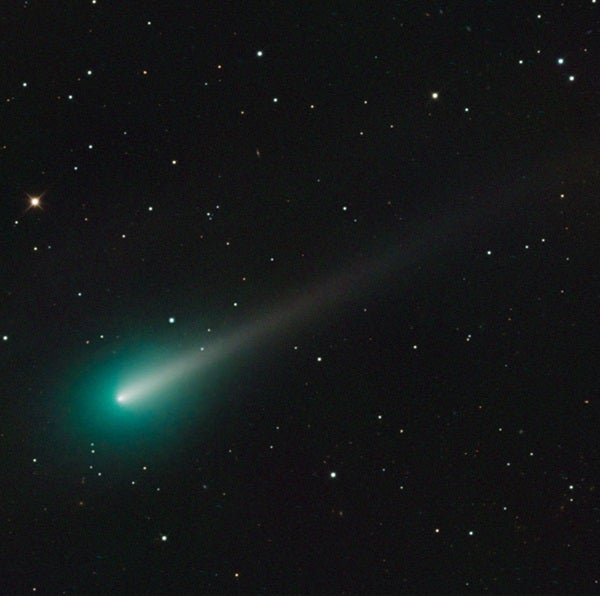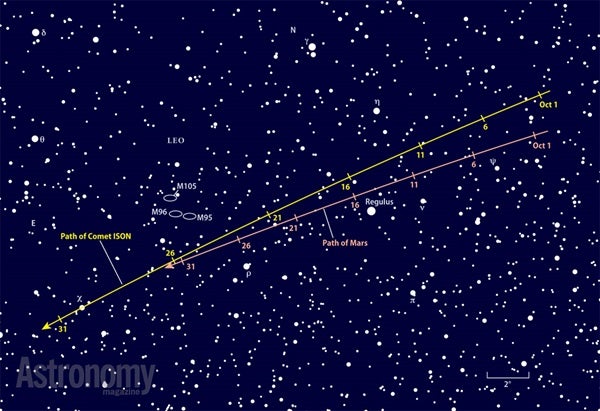For complete coverage of Comet ISON, including the latest images, visit www.Astronomy.com/ISON.
Although that exquisite alignment widens after midmonth, the three objects remain close for the next couple of days. On the 17th, they form a distinct triangle, with ISON 2° northeast of Regulus and Mars a little bit east of a line joining those two.
ISON’s tail should grow longer and brighter as the comet nears the Sun and warms up, which generates more gas and dust. Unfortunately, a waxing gibbous Moon returns to the morning sky October 17 and reaches its Full phase one day later.
By the final two weeks of October, ISON is speeding up. The closer it gets to our star, the faster it travels. The comet’s separation from Mars grows from 0.9° on the 17th to nearly 7° by the 31st.
Astronomy magazine Senior Editor Richard Talcott notes, “ISON’s finest encounter in late October is its passage near a trio of bright galaxies.” M95, M96, and M105 huddle near one another in the south-central part of Leo. On the morning of the 25th, the comet passes 1.7° due south of M95. “And although the objects are bright for galaxies,” Talcott says, “they’re still much too faint to see without optical aid, so you’ll need a telescope.”
Three mornings later (October 28), you can’t help but notice that the Moon has returned to the eastern predawn sky. The waning crescent then stands well to the comet’s upper right with Regulus roughly halfway between.
Luna and ISON slide closer to each other on the 29th, but the best scene by far arrives October 30. The Moon then lies 6° south (to the lower right) of the comet. With just 18 percent of the lunar disk lit, its glow shouldn’t detract much from the comet’s beauty, and it may even enhance the setting.
By November 1, the Moon prepares to exit the morning sky and the stage will be set for ISON’s greatest performance. The comet will continue to brighten, peaking on the 28th when ISON reaches its closest approach to our daytime star.
Pick up the October issue of Astronomy and the special issue The Great Comet of 2013 for even more coverage of ISON’s voyage to the inner solar system.











